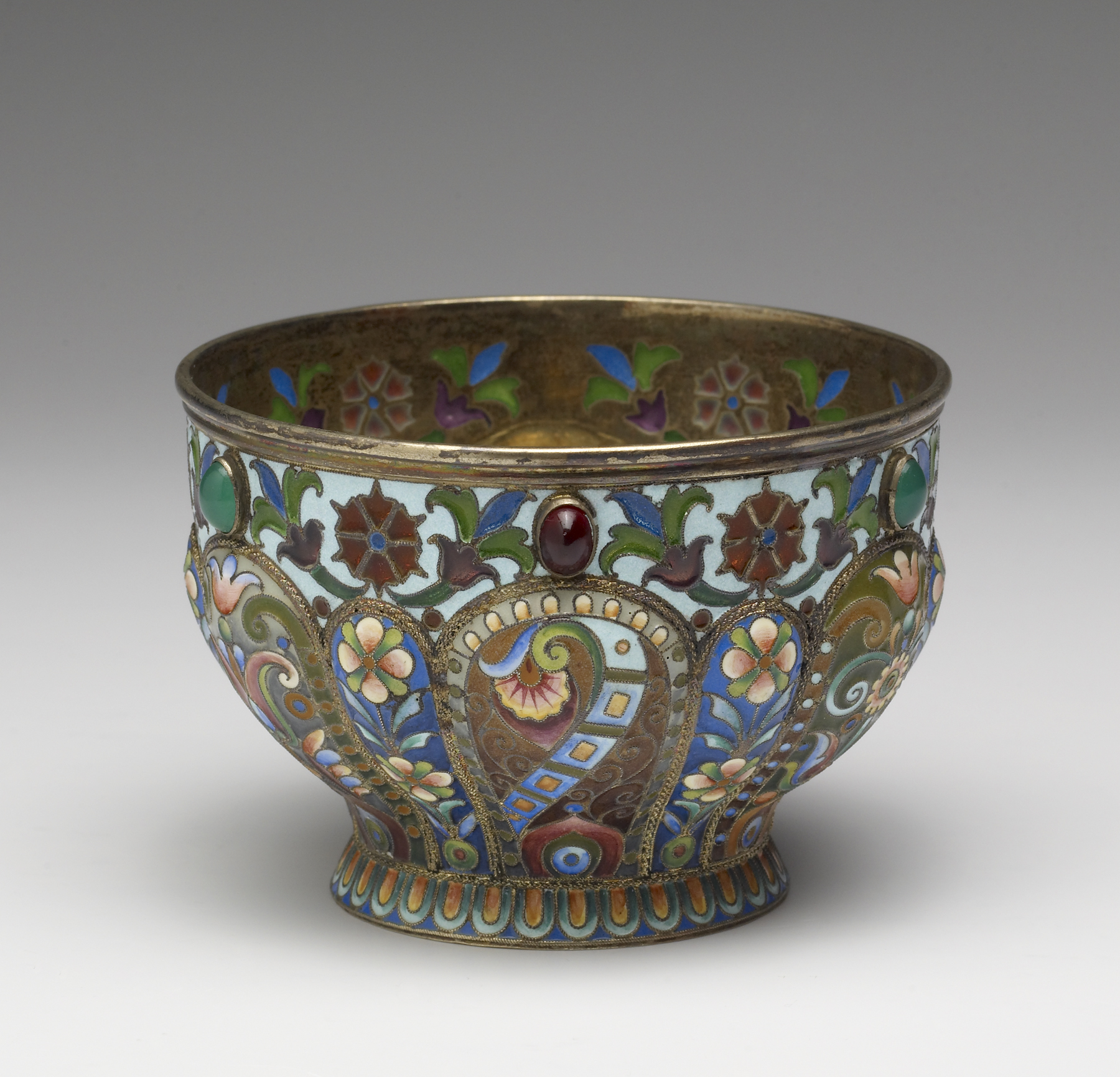Bowl
(18th and 19th Centuries )
The upper portion of the bowl is decorated with a row of six-petaled, orange blossoms with extending pairs of branches in blue, violet, and green plique-à-jour enamel on a light blue ground. These motifs are separated by six alternating red and green cabochon stones.
Below, six large repousée lobes alternate with six narrower lobes. The former are decorated with two variations of highly abstract, symmetrical floral designs in painted filigree enamel in deep green, violet and grayish grounds. The narrower lobes, which are more uniform in appearance, enclose symmetrical floral designs over a cerulean blue ground. The slightly flaring foot is bordered by a row of orange and greenish blue lozenge shapes over blue.
This bowl bears striking similarities in its floral motifs, symmetrical designs, and use of cabochon stones to another bowl by Alexseev (44.836).
Inscription
Provenance
Provenance (from the French provenir, 'to come from/forth') is the chronology of the ownership, custody, or location of a historical object. Learn more about provenance at the Walters.
Jean M. Riddell, Washington, D.C. [date and mode of acquisition unknown]; Walters Art Museum, 2010, by bequest.
Geographies
Russia, Moscow (Place of Origin)
Measurements
H: 2 1/2 x Diam: 3 3/4 in. (6.4 x 9.5 cm)
Credit Line
Bequest of Mrs. Jean M. Riddell, 2010
Location in Museum
Not on view
Accession Number
In libraries, galleries, museums, and archives, an accession number is a unique identifier assigned to each object in the collection.
In libraries, galleries, museums, and archives, an accession number is a unique identifier assigned to each object in the collection.
44.839




